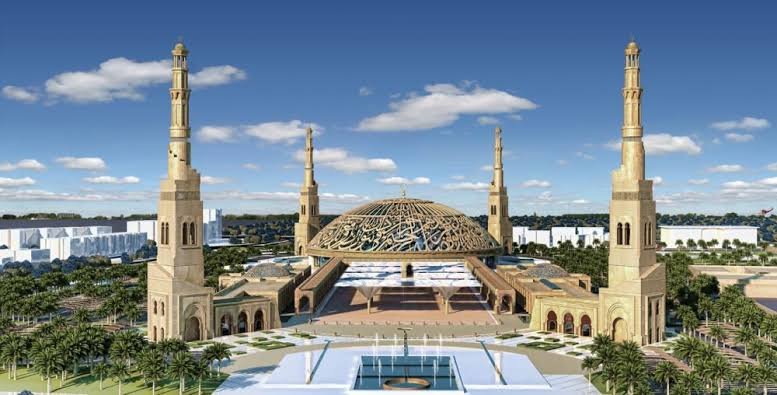Prayer times hold a special significance. Rooted in Islamic traditions, the five daily prayers (Salah) structure the day and offer an opportunity for spiritual reflection, connection, and peace.
In this guide, we will explore the importance of prayer times, how they are determined, and the resources available in Al Ain to help Muslims observe their prayers promptly.
The Significance of Prayer in Islam
Salah is one of the Five Pillars of Islam, making it a fundamental practice for Muslims. These daily prayers foster a direct connection with Allah (SWT) and serve as a reminder of one’s faith, gratitude, and responsibilities. Each prayer’s timing is carefully set to align with natural cycles, such as the movement of the sun, ensuring harmony between worship and daily life.

Observing prayer times on schedule is considered an act of devotion and discipline, as it reflects a Muslim’s commitment to their faith. Whether at home, at work, or while traveling, adhering to Salah schedules is a priority for Muslims worldwide, including those in Al Ain.

How Prayer Times Are Determined
Prayer times are based on the position of the sun and vary throughout the year. In Al Ain, like elsewhere in the UAE, the exact timings are calculated daily to ensure accuracy. Here is a breakdown of the five daily prayers:

- Fajr (Dawn Prayer): Begins at the first light of dawn and ends before sunrise. This prayer symbolizes purity and renewal, marking the start of the day.
- Dhuhr (Noon Prayer): Observed after the sun passes its zenith. It is typically performed during the midday break.
- Asr (Afternoon Prayer): Performed in the late afternoon before the sun begins to set. It signifies mindfulness amid daily responsibilities.
- Maghrib (Evening Prayer): Offered immediately after sunset. This prayer reflects gratitude for the day.
- Isha (Night Prayer): The final prayer of the day, observed after the twilight fades. It is a moment for reflection and seeking blessings before rest.
Prayer Times in Al Ain
Al Ain’s prayer times follow the local time zone (Gulf Standard Time, GST) and are updated daily. Because the city’s geographical location and the shifting solar patterns influence these timings, they may change slightly from one day to the next.
Local mosques and Islamic centers play a key role in broadcasting the Adhan (call to prayer), which notifies the community of the exact time for each prayer. Residents can also refer to printed prayer calendars, mobile applications, and online platforms for daily updates.
Mosques in Al Ain: Spiritual Anchors of the Community
Al Ain is home to numerous mosques, ranging from small neighborhood prayer halls to grand architectural landmarks. These mosques not only facilitate the observance of Salah but also serve as centers for learning, community engagement, and charity.
Notable Mosques in Al Ain:
- Sheikh Khalifa Bin Zayed Grand Mosque: One of the largest mosques in Al Ain, it offers a serene environment for worship and is an architectural marvel.
- Al Ain Mosque: Located in the city center, this mosque is known for its accessibility and community-oriented activities.
- Neighborhood Mosques: Scattered across Al Ain, these smaller mosques ensure that prayer facilities are available within walking distance for residents.
Tools and Resources for Staying Updated
For Muslims in Al Ain, staying updated on prayer times is essential. Here are some common resources to help:
- Mobile Applications: Apps like Muslim Pro and Athan provide accurate daily prayer times, along with Qibla direction, Quran readings, and Islamic calendars.
- Digital Prayer Clocks: Many homes and offices have prayer clocks that display real-time Salah schedules.
- Mosque Announcements: The Adhan, called out by the muezzin, is a reliable indicator of prayer times for those nearby.
- Printed Schedules: Monthly prayer calendars are often distributed by mosques and Islamic centers, listing the exact times for each day.
Adjusting to Seasonal Changes
As Al Ain experiences variations in daylight hours throughout the year, prayer times adjust accordingly. During summer, Fajr and Isha prayers occur earlier and later, respectively, due to longer daylight hours. Conversely, in winter, the times shift closer together, reflecting shorter days.
Muslims are encouraged to stay mindful of these seasonal changes to ensure they continue observing their prayers on time.
Tips for Observing Salah on Time
- Plan Your Day Around Salah: Integrate prayer times into your daily schedule to make worship a seamless part of your routine.
- Set Alarms: Use alarms or reminders to ensure you don’t miss a prayer.
- Locate Nearby Mosques: Familiarize yourself with the closest mosques, especially if you are new to Al Ain or traveling within the city.
- Use Travel Prayer Guides: For those on the move, travel-friendly prayer mats and compasses can help you perform Salah wherever you are.
The Spiritual Atmosphere of Al Ain
Al Ain’s tranquil environment and strong sense of community make it an ideal place for spiritual growth. The city’s mosques, Islamic centers, and cultural heritage contribute to an atmosphere that fosters mindfulness and devotion.
Special occasions like Ramadan and Eid further highlight the significance of Salah in Al Ain. During these times, mosques see a higher influx of worshippers, and the sense of unity and faith is palpable.
Conclusion
Prayer times in Al Ain are more than just schedules; they are a reflection of the city’s rich Islamic traditions and its residents’ commitment to their faith. With reliable tools, accessible mosques, and a supportive community, observing Salah in Al Ain is both meaningful and manageable.
Whether you are a resident or a visitor, staying attuned to prayer times enhances your spiritual experience and connects you to the heart of this beautiful city. By aligning your day with the rhythm of Salah, you embrace a practice that nourishes the soul and strengthens your bond with Allah (SWT).
Do Follow Uae stories for more Updates
Understanding the Gratuity Calculator in the UAE: A Comprehensive Guide














